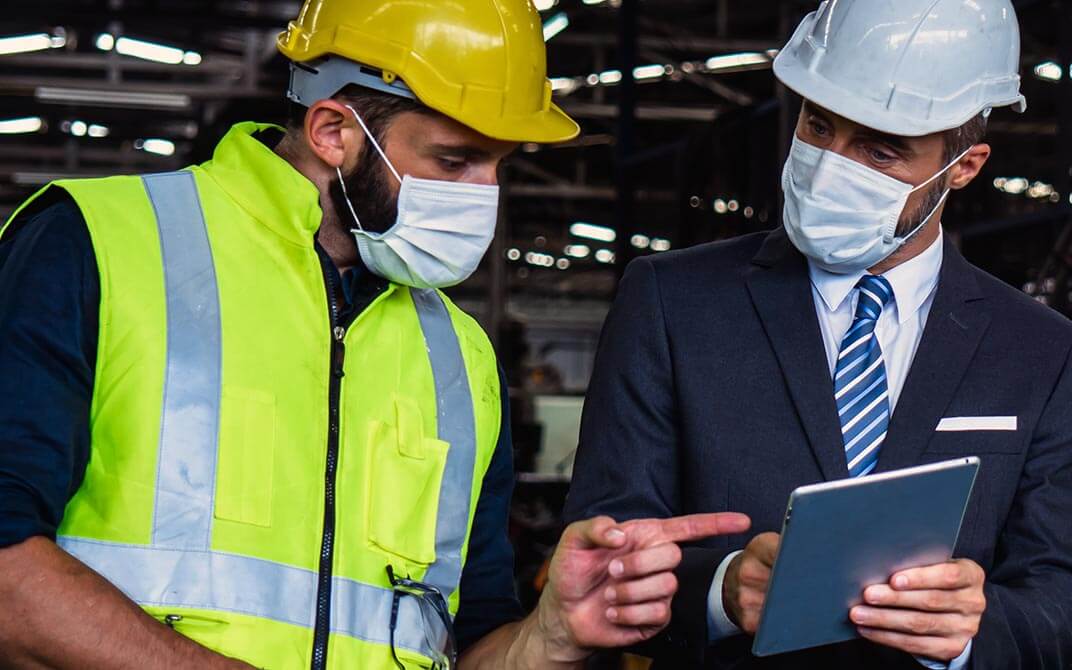The COVID-19 pandemic sparked a major seismic shift in ideas of how work can and should be done. As it swept across the globe, it forced people to change the way work is viewed. Resilient businesses took hold of digital innovation to get jobs done remotely. Shop floors had to be reimagined to accommodate safe social distancing for frontline workers. It’s important to acknowledge that these changes did not come easily, and the conditions that spurred these changes are following us into the new year. So, the only way forward for maintaining productivity, protecting workers, and thriving in a competitive climate is to leverage technology for The Future of Work, and look forward to the possibilities of Industry 4.0.
Digital Innovation is the Future of Work
As the year of working remotely unfolded, there were several key points from a McKinsey survey that surfaced. The first is that a good 20 percent of today’s workforce can, and probably should continue to work remotely at least half of the week. Furthermore, remote work has been as effective as work done in a traditional office setting—sometimes even more so. Of course, accomplishing a work-life balance while working from the kitchen table has been a bit of a challenge, but determination and creativity are winning. Employers have noticed an increase in productivity from remote workers over the first nine months of the pandemic, and it’s possible that the future of work for these particular employees will be a hybrid model mingling office and remote work.
On the other hand, we’ve also learned that not all work can be done effectively on a remote basis, at least not yet. In fact, at least half of workers do not have the ability to work remotely at this time, and continue to work in-person through the pandemic, which puts them at risk. So, although many workers were able to make the shift to remote work fairly quickly through the use of technologies already on hand, it was a lot harder for workers whose jobs center on person-to-person contact. This is particularly true in manufacturing, first-responding, delivering, and many others that require personal control of specialized equipment, or all-important, and much-missed face-to-face interactions.
At the same time, creativity and digital innovation have empowered some of these frontline workers to continue working more safely, even through the pandemic. By integrating innovative technology solutions, some of the risk has been reduced in some areas, and workers have been able to continue working productively, and safely. So, it’s become clear that resilient companies will take the future of work forward by using technology to complement their workers’ jobs, not replace them. That’s one of the central goals of industry 4.0 now.
The Pandemic Accelerated Industry 4.0
After this year, there’s really no going back to traditional styles of office work in order to stay competitive. Even in manufacturing, which has started the process of embracing and adopting the Future of Work, things are going much further.
The smart factory is now using all kinds of sensor-collected data and machine learning to drive systems that are efficient and autonomous like never before. By linking the Internet of Things (IoT) within a manufacturing system via digital solutions, everything from equipment maintenance issues to supply chain problems can be quickly and efficiently discerned and solved with a tap or two here and a digital signature there.
Decision makers have more insight from deeper data stores than ever before, meaning that they have more tools to work with when making difficult decisions to steer their companies forward. The biggest challenge in realizing the big benefits of industry 4.0 is to ensure that the labor market—the frontline workers themselves—are sufficiently prepared to take on these technological advances and actually become part of shaping the future of work themselves.
Where Do We Go From Here?
One thing is clear: the pandemic isn’t over yet; but when it is, digital innovation should empower us to create new ways of working that increase the percentage of remote workers while still maintaining and increasing productivity. MIT reports that much more needs to be done so all workers can enjoy the benefits of innovation growth in the workplace. It’s not so much a matter of digitizing systems as it is re-thinking operations to make them more efficient, productive and worker-empowering. Digital innovation can even enhance work that cannot be done remotely, and solutions like Anvl are key to helping protect and empower frontline workers.
So, how has the way you work been impacted by the pandemic? How has your business been resilient, and where do you want to improve? What does the future of work look like at your company? Reach out to Anvl for a free demo and see how innovation can help your company and workers achieve new heights, even in challenging times.


